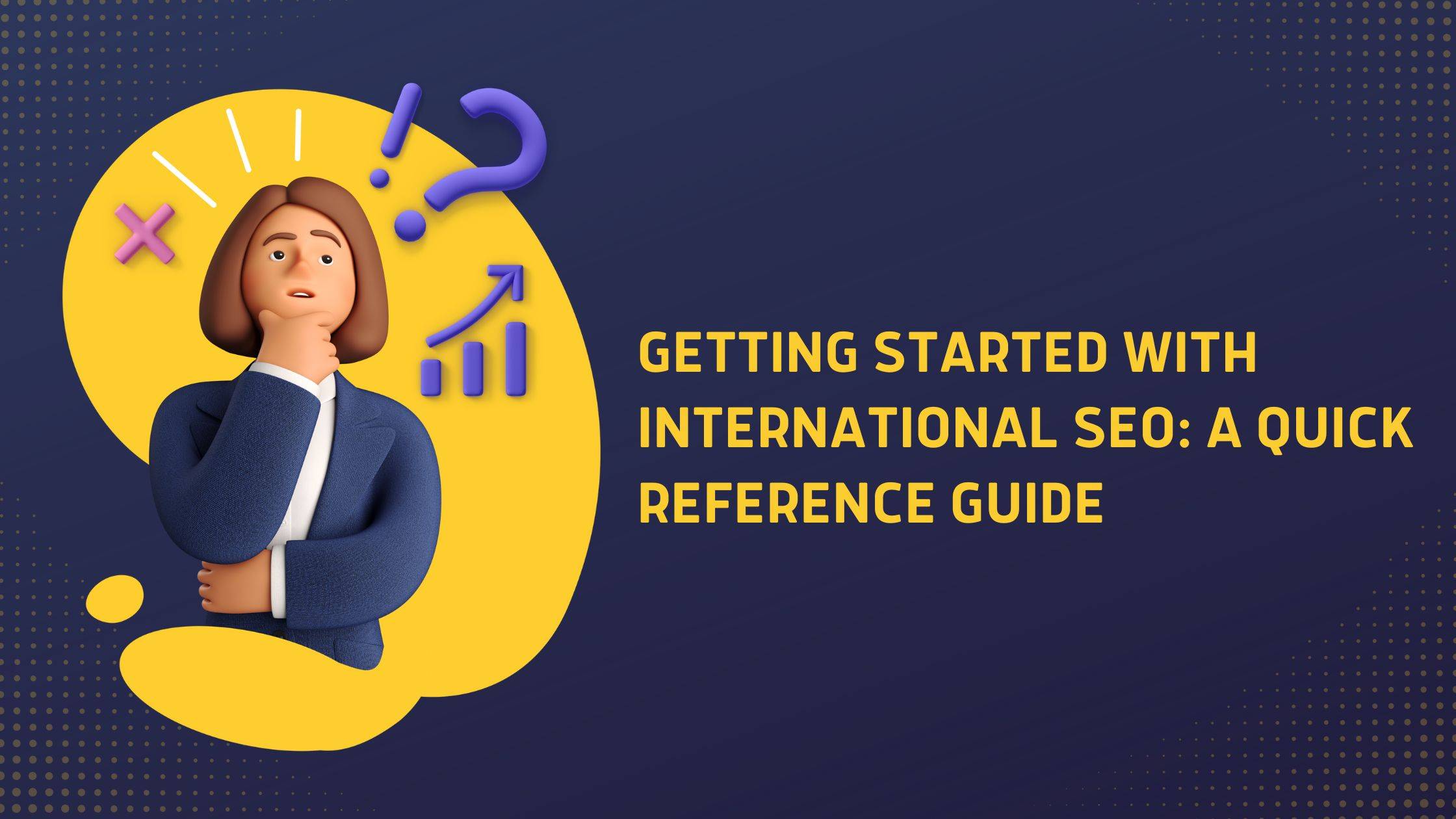Expand your presence worldwide with international SEO. This guide highlights the key challenges and tactics required to succeed in global markets. In today’s connected digital landscape, international SEO is no longer optional for businesses with worldwide goals—it’s essential.
The opportunity to reach varied audiences and drive growth through an optimized online presence across countries is immense.
However, simply running a global website isn’t sufficient. To achieve results internationally, your site must compete effectively within every local market.
This guide offers a refreshed overview of the critical factors to consider when implementing an international SEO plan.
How International SEO Differs from Standard SEO
At its core, SEO for a new region shares many fundamentals with domestic SEO, but additional complexities appear when expanding globally, such as:
- Language Differences: Each region speaks its own language, sometimes literally. Accurate localization and attention to cultural details are vital for connecting with local users.
- Multiple Site Versions: Legal, cultural, or engagement needs may require separate websites or dedicated sections for different countries.
- Regional Search Engines: While Google leads worldwide, platforms like Baidu in China, Yandex in Russia, and Naver in South Korea remain crucial in their respective markets.
- Local Competitors and Audiences: Competition is intense both globally and locally. Understanding the habits and expectations of users in each market is essential for traction.
- Cross-Market Overlap: Managing multiple global sites demands careful oversight. Without it, local versions may compete with one another or, worse, fail to be indexed.
Failing to consider these factors can lead to expensive errors.
For instance, your Mexico-specific site might outrank the one intended for Spain, or worse, technical issues with hreflang or canonical tags could prevent your pages from appearing in local search results altogether.
Choosing a grammatically correct phrase instead of a more commonly searched term can also mean missing valuable opportunities.
Should You Expand Globally? Assessing Market Potential
Before investing in international SEO, it’s crucial to pinpoint markets that offer both search demand and practical feasibility—taking into account ease of doing business, tariffs, and internet accessibility. Key sources for evaluation include:
- Government & Trade Information: Platforms like Trade.gov or WTO.org provide essential insights into market conditions and trade data.
- Global Internet Statistics: Reports from McKinsey, eMarketer, or Internet World Stats help measure online penetration and growth across regions.
- Current Website Analytics: Monitor organic traffic from overseas. Countries already delivering visits and conversions should rank high on your priority list.
- Google Search Console: Use the performance report to spot promising countries, especially where Google has auto-translated your SERP snippet or page into the local language.
By combining external research with internal analytics, you can identify where international SEO efforts are most likely to produce significant returns.
Global Strategy: Single Website or Multiple Websites?
When market potential, organizational needs, or cultural differences warrant it, creating dedicated websites for each country offers significant benefits.
This approach allows you to customize design, content, product offerings, and SEO for every individual market.
However, operating several websites demands considerable resources and may not be practical in the early stages.
For businesses exploring new regions, a multilingual site using a language-based structure with hreflang tags to indicate target languages and countries is often an effective first step.
As your presence expands, shifting to separate country-specific sites can improve both SEO performance and user experience.
Choosing the Right Domain: ccTLD vs. gTLD
In the past, country-code top-level domains (ccTLDs) were seen as essential for international SEO success.
Today, while ccTLDs still matter—particularly in markets such as China or Russia—global top-level domains (gTLDs) can be optimized effectively and reduce management complexity.
Hreflang implementation allows accurate geotargeting, giving you more flexibility in domain selection.
Still, user habits remain important. Many regions continue to favor local ccTLDs, and search engines like Baidu often give preference to sites with country-specific domains.
Additionally, audiences outside the U.S. are more likely to click on a site using their local TLD, especially when that ccTLD appears in offline advertising.
Keep in mind that if your site is multilingual or serves multiple countries, using a ccTLD alone will not automatically target the entire site to the country associated with that domain.
Does Hosting Location Matter?
In the past, hosting location acted as an additional geotargeting signal for search engines, especially when using a .com domain.
While hosting location now plays a smaller role in geotargeting, it still affects site performance—most notably page load speed across international markets.
A Content Delivery Network (CDN) can help maintain fast access for visitors in different regions.
Regularly test your website under various mobile and regional connection speeds to ensure you’re delivering a smooth, quick experience.
Beyond hosting, proper geotargeting methods remain vital. Use hreflang tags for Google and language meta tags for Bing to signal language and country targeting.
Google Search Console also lets you designate a geographic target for each site, which remains an important SEO factor.
Alternative Geotargeting Approaches
As many site owners have shifted from ccTLDs to gTLDs and from local servers to CDNs—and with Google retiring its GSC geotargeting feature—strong location signals have weakened.
To compensate, rely on techniques like hreflang tags for Google and language meta tags for Bing.
Where possible, add local touches such as regional language, place names, and currency details to your pages.
Including schema markup with business location information further enhances your site’s local relevance in search results.
Optimizing for Search Engines Beyond Google
Although Google dominates globally, several regions rely heavily on their own search platforms.
Key markets where local engines lead include:
- China (Simplified Chinese): Baidu
- Russia and parts of Eastern Europe: Yandex
- South Korea: Naver
Neglecting these platforms can mean missing substantial market share in those areas.
Local search engines often demand extra technical SEO work—such as government verification, compliance with unique algorithms, or reducing JavaScript usage to improve rankings.
Even in countries where Google holds the top spot, overlooking other significant engines like Bing can limit your overall reach.
Translation and Localization: Beyond Simple Translation
Simply converting text from your primary market into another language will not engage international users.
True localization tailors content to each country’s culture, consumer habits, and regional search patterns to provide the best user experience.
Conduct thorough keyword research for every target market. Even expertly translated copy can miss the phrases and search terms that local audiences actually use.
Keep in mind that while translators or agencies may deliver an accurately translated document, the terms they choose might not match the exact phrases people use in local searches.
Working with native speakers or region-specific experts helps ensure your message truly connects with the target audience.
Cultural Sensitivity and Seasonal Variations
When building multinational websites, recognizing and respecting cultural differences is essential for earning trust and engagement.
Every market carries unique values, customs, and expectations that should influence your site’s design, content, and messaging.
Colors, symbols, and imagery acceptable in one country might have negative associations in another.
Beyond language, factors such as navigation style, user interface preferences, mobile usability, and communication tone—whether formal or informal—need to align with local cultural norms.
Seasonal variations also matter. Different countries celebrate distinct holidays, and even shared holidays may fall on different dates or be observed differently.
E-commerce businesses, for example, must adapt promotions, product selections, and shipping schedules to local holiday seasons.
Understanding regional weather patterns, festivals, and major events can further tailor marketing efforts to local buying habits and seasonal demand, increasing both relevance and impact across markets.
Do I Need to Build Links for Each Website?
Absolutely. Even if you run a single global site with all countries or languages under one domain, every regional section still needs its own local backlinks—even when your main domain already has many.
Links remain vital for SEO, and each market-specific site must earn links from within that market to establish local authority.
This means acquiring backlinks from regional websites rather than depending solely on global links to your primary domain.
For example, an Indian site should attract links from websites based in India or targeting Indian audiences. Such links signal to search engines that your site is relevant and trustworthy in that region, boosting its competitive edge.
Additional Considerations Before Going Global
International SEO demands ongoing investment of both budget and dedicated resources.
Even large multinational companies often underestimate the need for in-market expertise in SEO, content creation, and technical upkeep.
Because SEO requires continuous attention—not a one-time setup—limited resources in each target country can quickly create bottlenecks.
Effective strategies divide responsibilities between headquarters and local teams to align global objectives with local execution.
If you lack on-the-ground staff, partnering with agencies that specialize in international SEO and localization can be essential.
How AI Can Support Global SEO
AI is not a replacement for SEO or localization teams, but it can help scale efforts and reduce manual tasks.
AI tools can generate first drafts of localized content, which human editors can refine to capture local nuance and tone.
They also analyze large data sets to provide actionable insights across markets, helping improve visibility and rankings in regional search engines.
This can be especially valuable where in-country resources are limited, allowing teams to focus on tasks that need human judgment.
Conclusion: Strategic Expansion Requires Focus
A global website and international SEO offer powerful opportunities to broaden your reach, but success demands careful planning, sufficient resources, and ongoing effort.
Conduct thorough market research, start with manageable goals, and ensure you have the capacity to scale.
By prioritizing local user experience, following technical SEO best practices, and building local authority, your business can establish a strong and lasting global presence.




